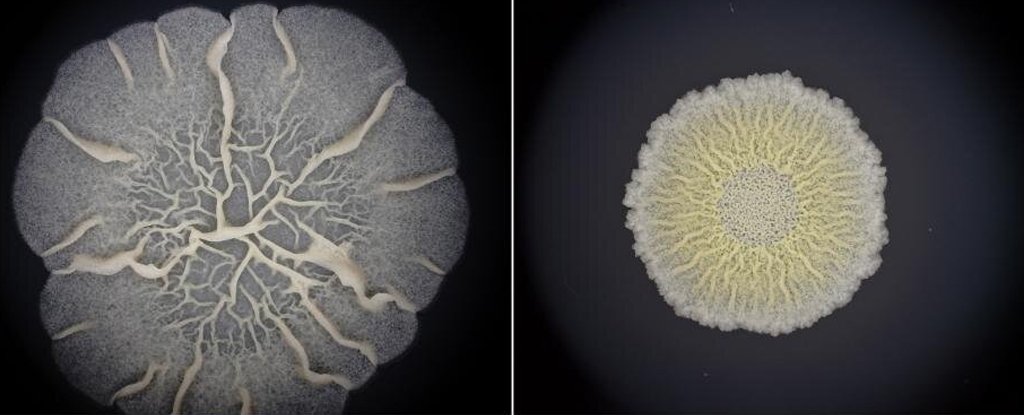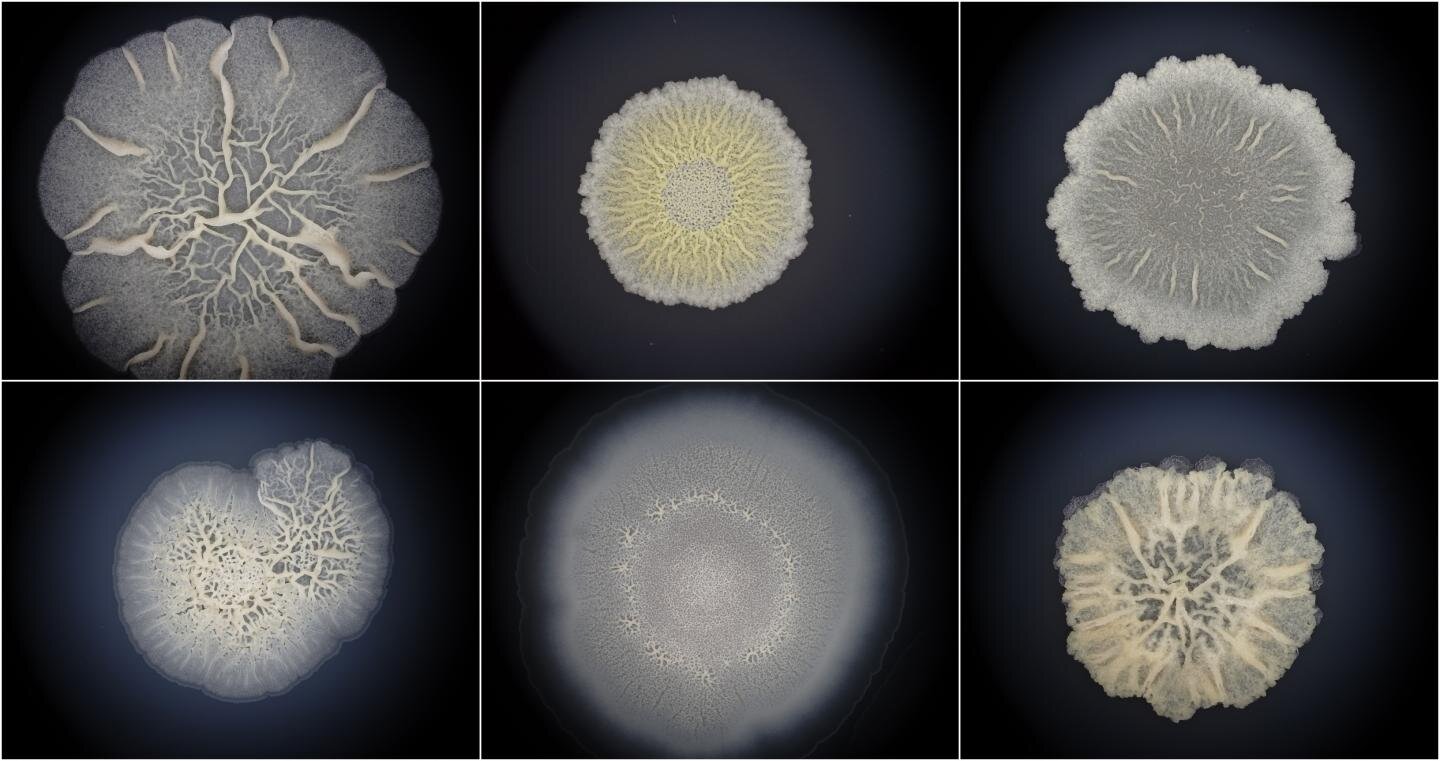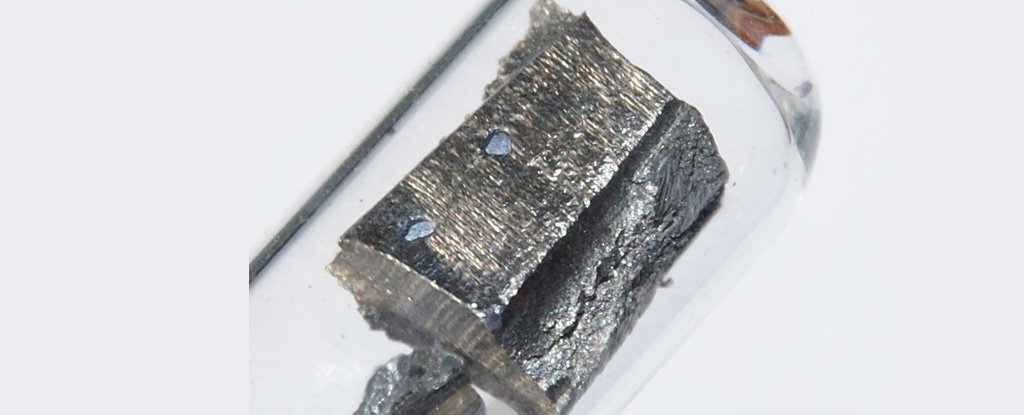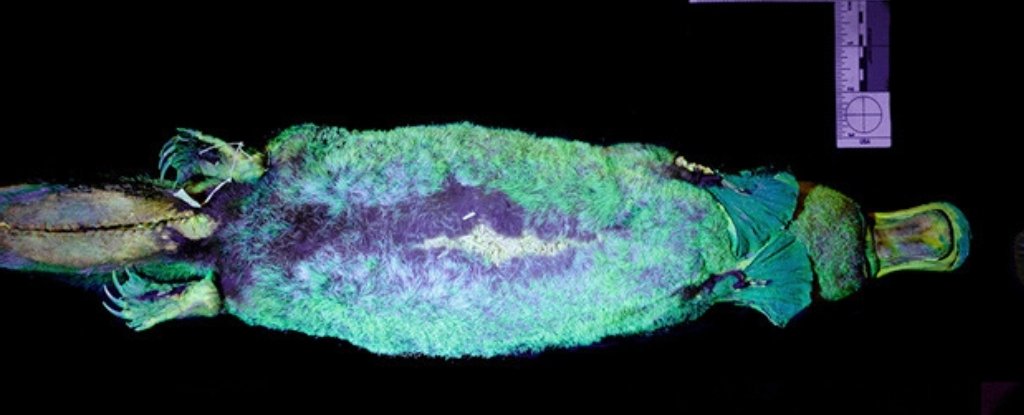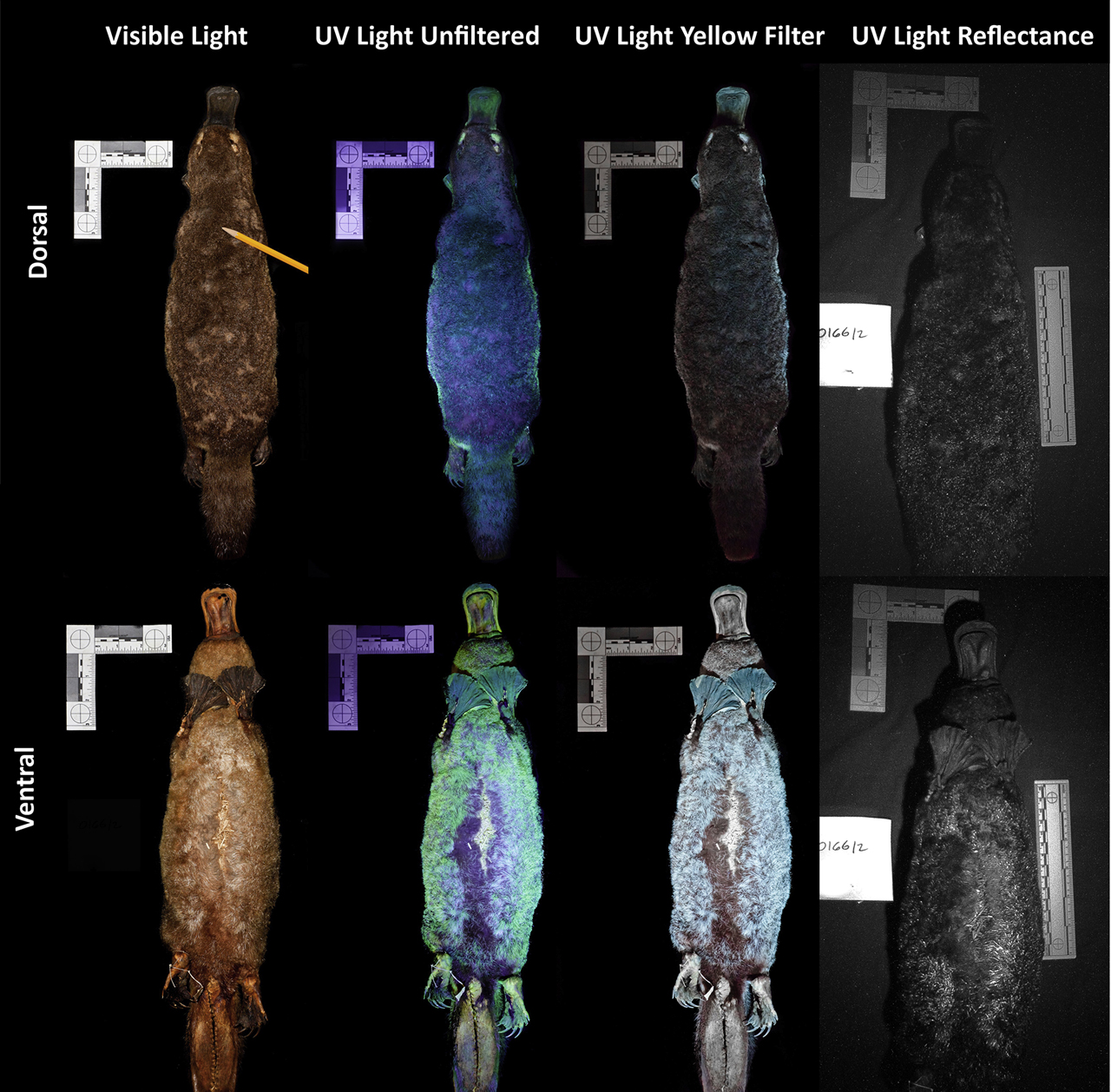expert reaction to Pfizer and BioNTech reporting interim results from phase 3 COVID-19 vaccine trial
NOVEMBER 9, 2020
Pfizer and BioNTech have announced that their vaccine candidate against COVID-19 achieved success in the first interim analysis from the phase 3 COVID-19 vaccine trial.
Prof Robin Shattock, lead for Imperial’s COVID-19 vaccine, said:
“Really encouraged to see this exciting announcement. Assuming it’s supported by the data then this not only represents a potential breakthrough for Pfizer/BioNTech, but also for vaccines in general. It also demonstrates the speed and utility of RNA vaccines technology. There is still much to be done including gaining regulatory approvals, scaling up manufacture and working out the logistics of massive vaccination programs. Hopefully this is the first of many vaccine candidates to be seen to work. This announcement certainly gives a boost to our own self-amplifying RNA vaccine program. Not yet the end game, but hopefully the beginning of global efforts to control this pandemic. A significant light at the end of the tunnel.”
Dr Jeremy Farrar, Director of Wellcome, said:
“These interim results offer some very positive news in what has been an immensely difficult year. It is important that we look closely at the data, and there are critical questions that remain to be answered. This vaccine could be more effective than we ever hoped for from the first generation of Covid-19 vaccines.
“We have said many times that science has moved at incredible pace in response to this pandemic. To have this news less than a year since Covid-19 emerged is a remarkable achievement and testament to the extraordinary global research response. Effective vaccines, alongside tests and treatments, will change the fundamentals of this pandemic and bring us closer to a sense of normality.
“The first doses of any effective vaccines must, however, be prioritised for those most in need across the world – this includes those at greatest risk of severe illness and frontline healthcare workers. If large parts of the world remain shut down because rich countries hoard supplies, we will all continue to suffer.
“This year has been unbelievably tough, and the coming weeks will still be exceptionally difficult, but these results remind us that this current situation is not forever. To help bring this pandemic under control we must continue to respect the current lockdown measures with this at the forefront of our minds.
“Any Covid-19 vaccine will face the largest and fastest vaccine manufacturing scale-up and roll-out in history. We must not underestimate the phenomenal logistical challenge that lies ahead – nor the importance of building public understanding, trust and confidence among all communities. In all countries this will be most effective if it is locally led. Success will depend on unparalleled global collaboration, greater even than we have seen so far. But I am increasingly optimistic we will get there, that there is light at the end of the very dark tunnel the world is in.”
Prof Eleanor Riley, Professor of Immunology and Infectious Disease, University of Edinburgh, said:
“With the best will in the world, this vaccine – or any other vaccine currently in trials – isn’t going to change things for the majority of us this winter.
“If we can start vaccinating the elderly and otherwise vulnerable, as well as NHS and care home staff, before the end of the year at the very earliest, it will still take time to roll it out to enough people to substantially reduce the pool of highly vulnerable people. Also, this vaccine needs two doses, three weeks apart and it will take at least a week after the second vaccination before you are fully protected. So even if you were vaccinated today, you couldn’t be confident you were immune for at least a month. Finally, we don’t know if the vaccine simply reduces symptoms or whether it prevents infection? If not, maybe it nevertheless prevents or substantially reduces transmission? We don’t know yet.
“So, we all need to accept that the current public health measures are going to remain in place at least until the end of the winter, possibly longer. But if this vaccine lives up to this early promise, and other vaccines work equally well, we may be able to look forward to a much better summer and autumn in 2021.”
Prof Rowland Kao, the Sir Timothy O’Shea Professor of Veterinary Epidemiology and Data Science, University of Edinburgh, said:
“This evidence of protection as high as 90% would, if confirmed to offer widespread and long lasting protection against transmission, be sufficient to in the future, but not yet, allow a return to near normal social interactions, with likely only sporadic outbreaks to deal with, if the uptake was high enough. However, there remain many hurdles to overcome even should the trial results be robust. First, even at point of approval, providing sufficient production for proper population coverage will take some time. Second, vaccine uptake will rely on a public confident of both its efficacy and safety, in order to minimise the effect of vaccine refusal and hesitancy. Most importantly, it must be available broadly and globally, aiming to protect those who are likely to be affected most all around the world. Despite these caveats, even smaller numbers of an approved vaccine with a lower efficacy than these results indicate would be an extremely useful tool to protect health workers and the vulnerable, thereby also reducing the number of non-pharmaceutical interventions we need to deploy. As such, should the results of these late stage trials be confirmed, they are very good news.”
Dr Zania Stamataki, Viral Immunologist, University of Birmingham, said:
“The knowledge that a protective vaccine is possible should boost hope in people to continue to abide by the safety guidelines for a while longer, until the vaccines become widely available.
“There is no data shared in this press release so we cannot scrutinise, but Pfizer report prevention of COVID-19 in 90% of cases based on 94 volunteers. This means that 90% of vaccinated people did not develop the disease when exposed to the virus after vaccination. It is important to understand what sort of symptoms the vaccinated people were spared, did they develop any symptoms at all or did they develop mild disease? It is remarkable that we have promising vaccines already for a disease that emerged less than a year ago, this is cause for celebration. The numbers will change when the study is completed and this is expected, we are looking forward to receiving the complete data set from this promising trial.”
Dr Rupert Beale, Group Leader, Cell Biology of Infection Laboratory, Francis Crick Institute, said:
“This is exceptionally good news. Most scientists expected that the vaccines would work, but 90% effective is right at the top end of expectations. It’s likely that some of the other leading vaccine candidates will also be successful. Until these can be deployed, we must redouble our efforts to suppress transmission of the virus – but we can do this knowing there’s light at the end of the tunnel.”
Dr Ohid Yaqub, Senior Lecturer in the Science Policy Research Unit (SPRU) at the University of Sussex Business School, said:
“These *interim* phase 3 results are extremely encouraging, and far exceed many of our expectations and regulatory hopes that specified a minimum of 50% efficacy.
“However, they are interim results, and we need to await full trial results.
“Moreover, the prospect of ultra-cold-chain distribution is likely to pose challenges. Many of the other potential vaccine options being developed are likely to be more thermostable.
“The need for effective test and trace will likely remain for long after a vaccine begins deployment.
“Masks, distancing, and improving the test and trace system remain vital priorities, and they are likely to remain so for the majority of 2021.
“The JCVI recommended plan is to immunise high risk individuals first, mainly by age group (over 85s, then over ion in 75s and so forth).
“This means that the supply of vaccine, particularly a two dose one, won’t be available for all immediately, even after approval, if it is granted.
“And the logistics would centre around getting these individuals clustered into tight scheduled appointments.”
Dr Pauline Paterson, Co-director of The Vaccine Confidence Project, and Assistant Professor in the Department of Infectious Disease Epidemiology, London School of Hygiene & Tropical Medicine, said:
“I was delighted to hear that preliminary results from one of the covid-19 vaccine trials is suggesting 90% effectiveness. Since covid-19 vaccines are being developed and produced much faster than any previous vaccines, it is really key that government and public health officials reassure the public that any covid-19 vaccines taken forward have been thoroughly tested for safety and efficacy, and are only taken forward if proved to be safe and effective. If and when a covid-19 vaccines are available, we will need equitable distribution of vaccines according to need and it is key that low and middle income countries are not forgotten.”
Dr Stephen Griffin, Associate Professor in the School of Medicine, University of Leeds, said:
“Whilst we must of course be optimistic and buoyed by the news of the Pfizer vaccine, we must not allow it to seed complacency. It will likely be several months following a potential emergency regulatory approval until the manufacture and roll out of the vaccine have reached enough of our population to have an impact. It is also essential that we fully evaluate the complete trial data set and understand which patients might not benefit from vaccination as much as others.
“We must remember that tens of thousands of people are being infected with this virus every day within the UK, putting immense strain on our healthcare systems and causing hundreds of deaths on a daily basis. Whilst the economic and societal costs of lockdown and the measures that will inevitably follow are severe, they sadly at present remain necessary as the only means at our disposal to avert a crisis as bad, or potentially worse than we endured in spring.”
Prof Gary McLean, Professor in Molecular Immunology, London Metropolitan University, said:
“The vaccine is still some way off yet and will not immediately replace the established control measures currently in place. What must be remembered is that rolling out such a vaccine to the general population will be done in stages, with the most vulnerable and front-line responders first in line. Such a roll out also depends on how many doses of vaccine can be manufactured and storage conditions – two doses are required and cold-chain must be observed. This will take time and effort so will likely be well into 2021 before we see general availability.”
Prof Stephen Evans, Professor of Pharmacoepidemiology, London School of Hygiene & Tropical Medicine, said:
“These provisional results look promising and this is a great encouragement for all the vaccines under trial. However, once again we have a press release without detailed data, even on the provisional result, but 90% efficacy is definitely good news, but there is some uncertainty. It is not known whether the efficacy is constant across age groups, and it is results in the elderly that are required for the first use of the vaccine in high risk people.
“It seems difficult in the light of an encouraging finding to raise concerns. The fact that the DSMB should release results but also continue the trial recruitment is unprecedented in my experience. It is going to make recruitment more difficult and the ethics of continuing to randomise people to placebo within this trial may be questioned. It may also lead to pressure to vaccinate the placebo group with the Pfizer vaccine. This will mean that the longer term follow-up within the properly randomised trial will become difficult, and it may be the longer term where the true benefit and harm balance will need to be assessed.”
“It’s encouraging news, but the process does not seem to have followed usual procedures, and that might leave some concerns.”
Dr Andrew Preston, Reader in Microbial Pathogenesis, University of Bath, said:
“The press release from Pfizer reporting the preliminary estimation of the efficacy of their RNA-based COVID-19 vaccine offers great promise for changing the course of the pandemic. Pfizer report an efficacy of greater than 90% for protecting individuals from COVID-19. This is excellent news, and very welcome.
“However, the actual data from the trial is not publicly available for full scrutiny, and it is noted that the trial is not yet complete. There is growing concern about public attitudes towards COVID-19 vaccines, with increasing numbers of people expressing doubts as to whether they would receive a vaccine when ones becomes available. Lack of vaccine uptake could greatly compromise the effectiveness of global vaccine programmes, regardless of how good the vaccines are.
“Tackling public concern over vaccine safety and vaccine effectiveness requires full transparency about the vaccines and the processes leading to their use. Until we have full transparency – the data available for independent scrutiny – we can’t be sure how much of a success this really is. Leaving a number of obvious questions unanswered in the release (for example what counts as protection – what are the criteria used to identify cases?) also creates needless uncertainty. Pfizer also state that they will apply for an Emergency Use Authorisation before the end of this month which to some will appear a premature move given the required 2 months of safety data are not yet in, and the trial still in process.
“None of this means that the vaccine is not as effective or as safe as Pfizer indicate and this initial result is certainly promising. But there have been a number of claims made for COVID developments, including treatments (remember hydroxychloroquine, and even remdesivir) that have been dogged by claims of use of selective data, or ignoring caveats. This cannot happen for COVID-19 vaccines if we are to encourage the high levels of vaccine uptake required for vaccines to be the intervention measure that we need them to be. Companies should avoid these unnecessary pitfalls in the coming months as we near the point of roll out of vaccination.”
Prof Andrew Pollard, Professor of Paediatric Infection and Immunity, and Director of the Oxford Vaccine Group, University of Oxford, said:
“We welcome these initial results announced today by Pfizer, which represent great news for the world as we face a global pandemic. Ideally we need several of these to be successful for the best possible results for humanity.
“We continue to work on the ChAdOx1 nCov-2019 vaccine and anticipate early efficacy readings in the coming months should the transmission rates remain high.
“Furthermore, these results indicate that it is possible to make a vaccine against this disease, which until this point has not been certain.”
Prof Azra Ghani, Chair in Infectious Disease Epidemiology, Imperial College London, said:
“Whilst the news of this vaccine is very welcome, it is important to bear in mind that in the short-term the vaccine doses will be limited. As noted by Pfizer, there will be 50 million doses available in 2020, and 1.3 billion doses in 2021. It is likely that in most settings these doses will be allocated to the highest risk groups – including elderly and vulnerable populations, health care workers, and other highly exposed groups. Vaccination will take time; and importantly the vaccine requires 2 doses 21 days apart before it is efficacious. We also do not yet know how efficacious the vaccine is over a longer time period, or in particular high-risk groups. As the process of vaccination evolves over the coming months it will be important to maintain social distancing and other mitigating measures to avoid overwhelming the health system and putting those who are not vaccinated at risk of disease.”
Prof Paul Hunter, Professor in Medicine, UEA, said:
“Promising indeed.
“The press release from Pfizer suggests that at the interim analysis the vaccine is greater than 90% effective from 7 days after the second dose at preventing infection. If this remains the case after the final analysis and the paper passes peer review, then this is a remarkable result. The press release suggests that the 90% effectiveness is at preventing infection and not just serious illness. A vaccine that prevents infection would also dramatically reduce transmission of the virus providing that immunity lasts for at least a year or more.
“If this statement is supported by the data then it is a remarkable result. I have not seen the data so only based my opinion on the press release not on the data. I have had to take the press release on trust so ultimately people need to see the data before any definitive conclusions can be made. It is too early to say whether this is a vaccine that will require regular annual boosters, but even if it does this would fit well with the annual influenza vaccine campaigns. Providing that the results hold up in the final analysis, the vaccine is deployed effectively and post marketing surveillance finds no untoward effects then this would have a huge benefit on reducing the damage that the current pandemic is having on society.”
Dr Simon Clarke, Associate Professor of Cellular Microbiology at the University of Reading, said:
“In the absence of any data from Pfizer and BioNTech, we have to take these very exciting claims at face value. It seems highly unlikely that a major pharmaceutical company would get such eagerly awaited news wrong. The trials are not over yet and the manufacturers are right to remind people that more data on effectiveness and safety are needed, plus there are production and distribution problems to be overcome, but these should not be beyond the wit of human ingenuity. If this vaccine makes it to the clinic, it will be the first instance of this strategy (an mRNA vaccine) being effective and could open up many other avenues for diseases where there currently is no vaccine.”
Prof Fiona Watt, Executive Chair of the Medical Research Council, said:
“This is very encouraging news – and provides grounds for optimism that other vaccines will also show benefits. What really strikes me though is the fantastic contribution of the many volunteers who have taken part in the trial, including over 40% from diverse backgrounds – without their altruism the trial could not have gone ahead.”
Dr Alexander Edwards, Associate Professor in Biomedical Technology, Reading School of Pharmacy, University of Reading, said:
“The enormous effort that has gone into producing a candidate vaccine and testing at this scale should be celebrated, and achieving impressive interim phase three results like these is a great relief. The next stage, assuming safety and efficacy continues to be seen over longer times with ever larger groups, will still be a monumental undertaking. With all vaccines, ensuring that they are stored distributed and administered properly is essential, and huge efforts are underway to ensure this is possible for new vaccines.
“For example, the task of producing substantial amounts of a new vaccine and disturbing widely will be a challenge, not least for this particular formulation where ensuring that it can be appropriately frozen until needed and must not be allowed to thaw in transit. Some reports have indicated this particular vaccine requires storage at -80 centigrade, needing specialist storage and distribution.
“I’m confident that institutions and businesses will be reacting rapidly with efforts similar to what we saw in the Spring when they stepped up to support increasing testing and PPE production. Medicine manufacturing and distribution networks and the healthcare professions (pharmacists, nurses, GPs as well as manufacturers and distributors) who together deliver vaccine services will be under pressure and we must invest in and support these vital sectors wherever possible.”
Prof Gary McLean, Professor in Molecular Immunology, London Metropolitan University, said:
“This is very promising indeed. Whilst the interim results do only investigate a relatively small number of confirmed cases (not clear the proportion of these 94 confirmed cases in vaccine vs placebo groups) this is a good sign and encouraging that the vaccine is apparently protecting against infection rather than only protecting against symptom severity. More to come when further results are released but looking good so far with tens of thousand in the study and no safety concerns at this stage.”
Prof Eleanor Riley, Professor of Immunology and Infectious Disease, University of Edinburgh, said:
“At face value, this is exceptionally good news: a vaccine that is 90% effective at preventing symptomatic cases of COVID-19 and with millions of doses available by the end of the year.
“However, the full data set on which the claim is based has not yet been released and so we don’t know exactly what has been found. The two companies are at pains to point out that the trial participants are ethnically diverse, which is good, but say nothing about the age of people in the trial. If a vaccine is to reduce severe disease and death, and thus enable the population at large to return to their normal day-to-day lives, it will need to be effective in older and elderly members of our society. We also know nothing yet about the severity of cases that were seen in the trial, whether infection or infectiousness was prevented, or how long the immunity is expected to last.
“But, I think we have reason to be cautiously optimistic.”
Prof Peter Horby, Professor of Emerging Infectious Diseases and Global Health in the Nuffield Department of Medicine, University of Oxford, said:
“This news made me smile from ear to ear. It is a relief to see such positive results on this vaccine and bodes well for COVID-19 vaccines in general. Of course we need to see more detail and await the final results, and there is a long long way to go before vaccines will start to make a real difference, but this feels to me like a watershed moment.”
Prof Brendan Wren, Professor of Microbial Pathogenesis, London School of Hygiene & Tropical Medicine, said:
“A 90% efficacy for a phase 3 trial is excellent for a new vaccine that could make a huge difference, but more confirmatory safety and efficacy studies are required. The RNA-based vaccine requires two doses and its true efficacy over a longer period of time remains to be evaluated. These are encouraging results and it is a case of so far so good.”
Prof Lawrence Young, Professor of Molecular Oncology, Warwick Medical School, said:
“This is a very timely and encouraging development in the race to get an effective vaccine. It is difficult to fully evaluate the interim data without more information but it appears that
the vaccine is able to protect against COVID-19 disease. The big question is whether the vaccine can block virus infection and subsequent transmission. This additional data will be generated as further confirmed cases are identified and analysed. This trial is using a mRNA-based vaccine containing the SARS-CoV-2 spike protein combined with a lipid nanoparticle. Almost all of the other vaccines using different technology platforms are focussing on the same virus spike protein. So it is likely that some of these other vaccines will also be able to prevent COVID-19. The challenge with the distribution of the
Pfizer vaccine is the need to store and maintain the vaccine at very low temperatures (-70 to -80 degrees C).”
Dr Michael Head, Senior Research Fellow in Global Health, University of Southampton, said:
“This cautiously sounds like an excellent result from the phase 3 trials, but we should remain a little cautious. The provisional findings are made available in a press release, and the study is ongoing. However, if the final results show an effectiveness of anywhere near 90% with response in elderly and ethnic minority populations, that is an excellent result for a first generation vaccine. This has been seen before – the rapidly-produced Ebola vaccine generated very high levels of effectiveness and exceeded all expectations. Equally, billions of dollars and numerous clinical trials have struggled to produce any form of vaccination against HIV. Science can be unpredictable.
“If this Pfizer vaccine candidate is licensed, there will be difficulties around logistics and distribution. It has been reported that the vaccine requires storage at -70 degrees centigrade, and that is not necessarily routinely available in most health centres even in the UK, let alone globally.”
Prof Azra Ghani, Chair in Infectious Disease Epidemiology, Imperial College London, said:
“These new results represent the first demonstration of substantial efficacy of a vaccine candidate against COVID-19 disease which is very welcome news. It is important to bear in mind that these are early results based on a relatively small number of cases. In addition, the efficacy estimate is based on 7 days of follow-up of participants following the second dose; further data in the coming weeks and months will provide a better picture of longer-term vaccine efficacy.”
Prof Ian Jones, Professor of Virology, University of Reading, said:
“Of all the current vaccine currently in development the BioNtech product always looked like the most bang-per-buck as it is entirely focused on the part of the virus that binds to the human cell, the receptor binding domain. The questions around its use were about the ability to manufacture at scale and the possible toxicity associated with a directly injected RNA product. The trial data show excellent results in both of those areas, really impressive protection and no reported adverse events. The only things we will not know for some time is the longevity of the response in all age groups, but assuming antibody titres are high that should be at least as good as any other vaccine currently in trial. More generally this would appear to indicate that this approach has legs and is likely to useful for other emerging disease.”
All our previous output on this subject can be seen at this weblink:
www.sciencemediacentre.org/tag/covid-19
Declared interests
Prof Robin Shattock: “Robin Shattock is leading Imperial College’s self-amplifying RNA COVID-19 vaccine project. He is a co-founder of VacEquity Global Health, a social business committed to making Imperial’s self-amplifying vaccine globally available at affordable costs should it be shown to be effective.”
Dr Jeremy Farrar: “Jeremy Farrar is a member of the UK Vaccine Task Force.”
Prof Rowland Kao: “No competing interests.”
Dr Zania Stamataki: “I have no conflict of interest to declare.”
Dr Rupert Beale: “No COIs.”
Dr Stephen Griffin: “No conflicts.”
Prof Stephen Evans: “No conflicts of interest. I am funded (one day per week) by LSHTM. They get funding from various companies, including Astra Zeneca and GSK but I am not funded by them, I have no involvement in obtaining funding from them and I am not an investigator on any grants obtained from them. I am the statistician to the ‘meta-Data Safety and Monitoring Board’ for CEPI. I am paid for my attendance at those meetings and will be paid expenses for travel if that occurs.”
Dr Andrew Preston: “I am part of a project on which Sanofi and GSK Vaccines are partners, and that receives funding from BMGF, but it is in pertussis vaccine pre clinical platforms, nothing to do with COVID.”
Prof Paul Hunter: “No financial conflicts that I know of and I do not work in vaccine development or advise anybody on vaccines.”
Dr Simon Clarke: “None.”
Prof Fiona Watt: “None.”
Dr Alexander Edwards: “I can confirm I have no conflicts of interest around vaccine development.”
Prof Gary McLean: “No conflict of interest to declare.”
Prof Eleanor Riley: “Eleanor Riley is a member of the UKRI Covid-19 research taskforce and the UK Vaccines Network.”
Prof Peter Horby: “Chief Investigator of the RECOVERY trial.”
Prof Brendan Wren: “None at all.”
Prof Lawrence Young: “I have no conflicts of interest.”
Dr Michael Head: “I have no conflicts of interest to declare.”
Prof Azra Ghani: “I don’t think I have any conflicts but note that I am providing advice to WHO and WHO-Europe on vaccine modelling to support allocation.”
Prof Ian Jones: “No conflicts.”
None others received.





